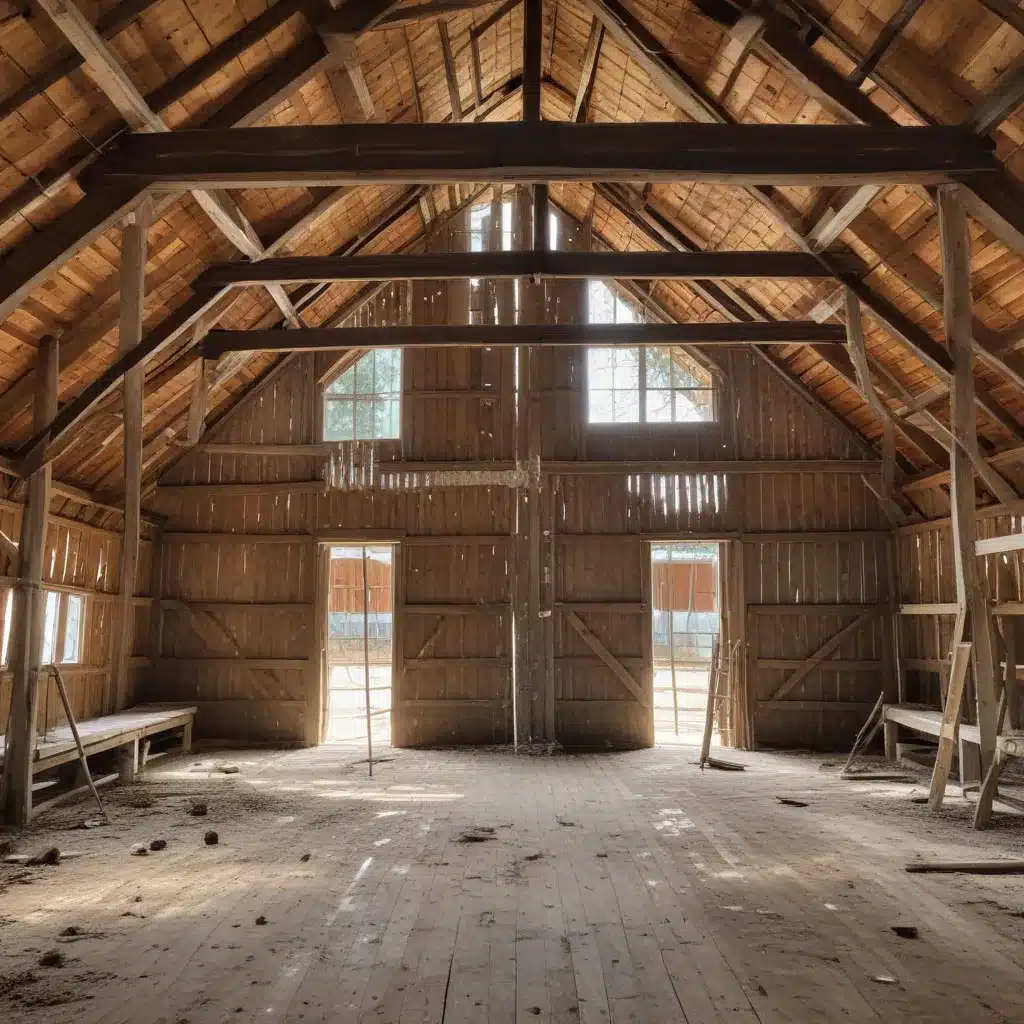
Preserving the Past: Restoring the Historic Barns at Crooked Pines Farm
Crooked Pines Farm is an oasis of pastoral beauty, nestled amidst the rolling hills of the Mid-Atlantic region. At the heart of this vibrant farm lies a remarkable testament to the area’s agricultural heritage – a collection of historic barns that have weathered the passage of time. These structures, once the epicenter of bustling farmland activities, now stand as emblems of the region’s cultural identity, begging to be preserved and revitalized.
The Significance of Historic Barns
These barns, with their weathered wooden beams and time-worn facades, are not merely functional structures – they are living embodiments of the region’s architectural legacy. Their distinctive designs, influenced by the vernacular styles of the 18th and 19th centuries, reflect the ingenuity and craftsmanship of generations of farmers and builders. From the gambrel-roofed bank barns to the iconic English hay barns, each barn tells a unique story of the area’s agricultural evolution.
Beyond their architectural merit, these historic barns hold immense historical significance. They serve as tangible reminders of the region’s agricultural traditions, which have sustained communities for centuries. The ebb and flow of farm life, the rhythms of planting and harvesting, the camaraderie of neighbors joining together for barn raisings – all of these elements are woven into the fabric of these structures, creating a living link to the past.
The Challenges of Barn Restoration
Preserving these historic barns, however, is no easy feat. Decades of exposure to the elements, coupled with changing agricultural practices, have taken a toll on their structural integrity. Weathered wood, crumbling foundations, and failing roofs pose significant challenges for those tasked with their restoration.
Moreover, the very materials that once defined these structures – hand-hewn beams, hand-forged nails, and traditional mortise-and-tenon joinery – have become increasingly scarce and difficult to source. Adapting these ancient building techniques to modern construction standards requires a delicate balance of historical preservation and practical considerations.
Crooked Pines Farm: A Case Study
Crooked Pines Farm, with its rich agricultural history, has taken on the ambitious task of restoring its historic barns. The farm, founded in the late 1800s, has witnessed the ebb and flow of the region’s farming traditions, and its collection of barns reflect this evolving landscape.
The Barn Restoration Process
The restoration process at Crooked Pines Farm began with a comprehensive assessment of the barns’ structural conditions. The team of experts, comprising architects, engineers, and historic preservationists, carefully evaluated each barn, documenting its unique features and identifying the areas in need of immediate attention.
Armed with this detailed information, the farm’s restoration team developed a meticulous plan of action. Stabilizing the foundations, reinforcing the structural frames, and replacing deteriorating roofs and siding became the immediate priorities. Throughout the process, the team remained committed to preserving the barns’ original character, using materials and techniques that honored the structures’ historical integrity.
Preserving the Unique Character
As the restoration progressed, the team at Crooked Pines Farm quickly realized that simply repairing the barns was not enough. Integrating modern functionalities, while maintaining the barns’ unique architectural styles, became a central challenge.
Through innovative design solutions and careful planning, the farm has successfully transformed these historic structures into vibrant, multi-purpose spaces. The once-dilapidated hay barns now serve as event venues, hosting farm-to-table dinners, educational workshops, and community gatherings. The bank barns, with their distinctive double-level layouts, have been reimagined as cozy guest accommodations, offering visitors a glimpse into the region’s agricultural past.
Sustainable Practices and Environmental Considerations
Crooked Pines Farm’s commitment to preserving its historic barns extends beyond the structures themselves. The team has embraced sustainable practices to ensure the long-term viability of these restored spaces.
Energy-efficient upgrades, such as geothermal heating and cooling systems, have been seamlessly integrated into the barns, reducing their environmental impact without compromising their historic character. Additionally, the farm has carefully selected locally sourced, eco-friendly materials for the restoration work, minimizing the carbon footprint of the project.
The farm’s dedication to environmental stewardship extends to the surrounding landscape as well. The restoration team has worked diligently to integrate the barns into the broader ecosystem, preserving the integrity of the region’s natural habitats and ensuring the barns exist in harmony with the land.
Community Engagement and Educational Initiatives
Crooked Pines Farm recognizes that the preservation of its historic barns is not merely a private endeavor, but rather a shared responsibility with the community. The farm has actively engaged local residents, historians, and preservation enthusiasts, inviting them to participate in the restoration process and share their insights and expertise.
Through a series of educational initiatives and interpretive programs, the farm has transformed its historic barns into hubs of learning and discovery. Visitors can immerse themselves in the region’s agricultural heritage, exploring the barns’ architectural features, learning about traditional farming techniques, and gaining a deeper appreciation for the importance of preserving these cultural landmarks.
Moreover, the farm has forged strong partnerships with local and regional organizations, leveraging funding and resources to ensure the long-term sustainability of its barn restoration efforts. By fostering these collaborative relationships, Crooked Pines Farm has become a beacon of inspiration, demonstrating the power of community-driven preservation.
Conclusion
The historic barns of Crooked Pines Farm stand as testaments to the region’s rich agricultural legacy, embodying the ingenuity, resilience, and cultural identity of generations of farmers. Through a meticulous restoration process that balances preservation and modernization, the farm has breathed new life into these structures, transforming them into vibrant, multifunctional spaces that continue to captivate and educate visitors.
As the farm’s restoration efforts continue, it serves as a model for other agricultural communities, inspiring them to safeguard their own cultural heritage and celebrate the enduring significance of their historic barns. By preserving the past, Crooked Pines Farm ensures that the stories and traditions of the region’s farming past will continue to shape the future, inspiring new generations to connect with the land and appreciate the timeless beauty of these architectural treasures.


